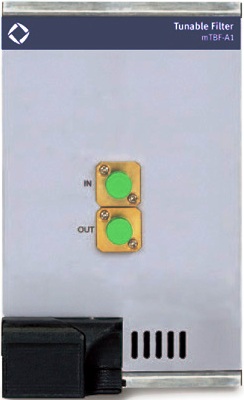
|
|
The JDSU MTBF-A1 Multiple Application Platform (MAP) Tunable Filter series is optimized for the industry-leading JDSU MAP-200 platform. Based on the previous-generation MAP, the MAP-200 is the first photonic layer lab and manufacturing platform that is LAN Extensions for Instrumentation (LXI)-compliant by conforming to the rquired physical attributes. Ethernet connectivity, and interchangeable virtual instrument (IVI) drivers. The MAP-200 platform is optimized for density and maximum configurability to meet specific application requirements in the smallest possible foot print. The MAP Tunable Filter is a tunable bandpass filter that offers continuous wavelength tuning from 1520 to 1630 nm. It is used for applications requiring low insertion loss (IL), high rejection, narrow bandwidth and wavelength tuning resolution of 0.005 nm. The standard model has a maximum input power of 300 mW and the high power option provides a maximum input power of 1000 mW. Two options are available: the peak search option, used to find the absolute maximum transmission power within the filter’s wavelength tuning range or a local maximum transmission power within a user-defined wavelength range; and 10% tap option for power monitoring. MAP Tunable Filter is ideal for applications where the user needs to suppress amplified spontaneous emissions (ASE) or isolate specific wavelengths. These applications include amplifier characterization, bit error rate (BER) testing and optical signal-to-noise ratio (OSNR) measurement. Key Features. Available in three FWHM bandwidths (0.11, 0.25, 0.55 nm). Wide wavelength range (1520 to 1630 nm). Return loss (RL) >45 dB. Wavelength resolution 0.005 nm. Polarization dependent loss (PDL), 1520 to 1630 nm <0.3 dB. Tuning speed >5 nm/s. Peak to average background noise >45 dB. Accuracy ±0.2 nm. Peak search accuracy <0.2 dB from output peak power. Polarization mode dispersion (PMD) <0.3 ps. Group delay variation within a –3 dB bandwidth <5 ps.
|